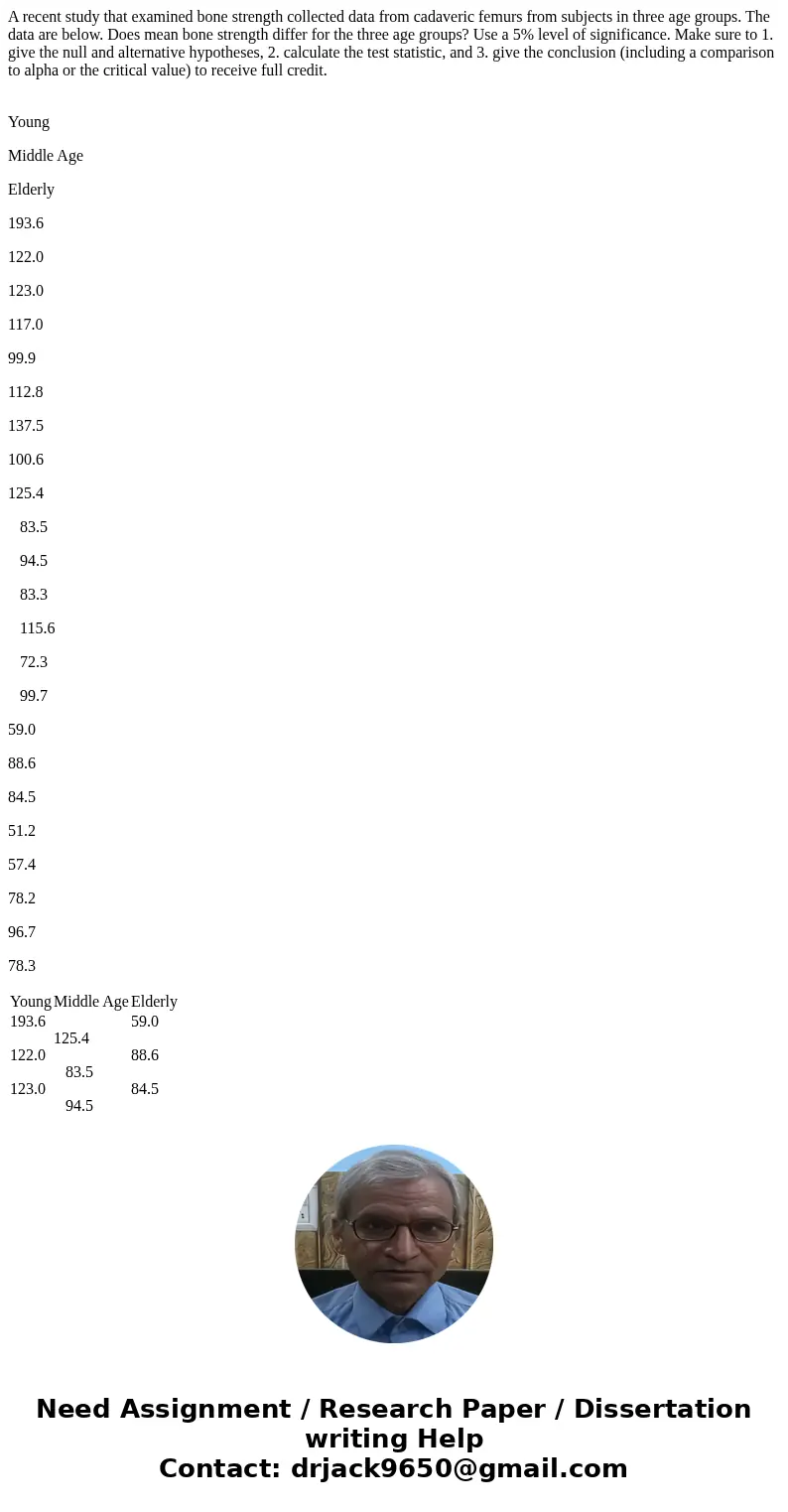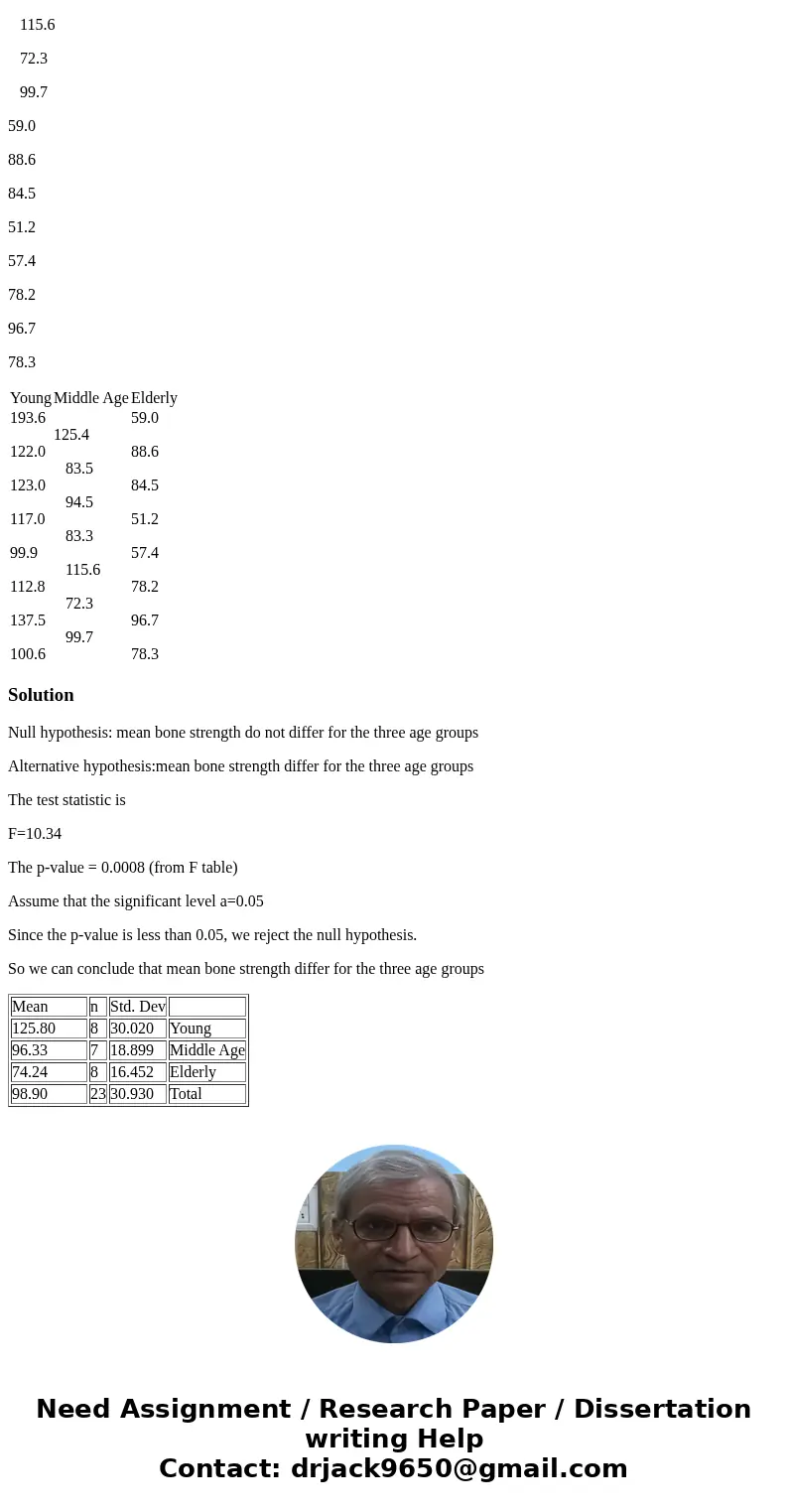A recent study that examined bone strength collected data fr
A recent study that examined bone strength collected data from cadaveric femurs from subjects in three age groups. The data are below. Does mean bone strength differ for the three age groups? Use a 5% level of significance. Make sure to 1. give the null and alternative hypotheses, 2. calculate the test statistic, and 3. give the conclusion (including a comparison to alpha or the critical value) to receive full credit.
Young
Middle Age
Elderly
193.6
122.0
123.0
117.0
99.9
112.8
137.5
100.6
125.4
83.5
94.5
83.3
115.6
72.3
99.7
59.0
88.6
84.5
51.2
57.4
78.2
96.7
78.3
| Young | Middle Age | Elderly |
| 193.6 122.0 123.0 117.0 99.9 112.8 137.5 100.6 | 125.4 83.5 94.5 83.3 115.6 72.3 99.7 | 59.0 88.6 84.5 51.2 57.4 78.2 96.7 78.3 |
Solution
Null hypothesis: mean bone strength do not differ for the three age groups
Alternative hypothesis:mean bone strength differ for the three age groups
The test statistic is
F=10.34
The p-value = 0.0008 (from F table)
Assume that the significant level a=0.05
Since the p-value is less than 0.05, we reject the null hypothesis.
So we can conclude that mean bone strength differ for the three age groups
| Mean | n | Std. Dev | |
| 125.80 | 8 | 30.020 | Young |
| 96.33 | 7 | 18.899 | Middle Age |
| 74.24 | 8 | 16.452 | Elderly |
| 98.90 | 23 | 30.930 | Total |


 Homework Sourse
Homework Sourse